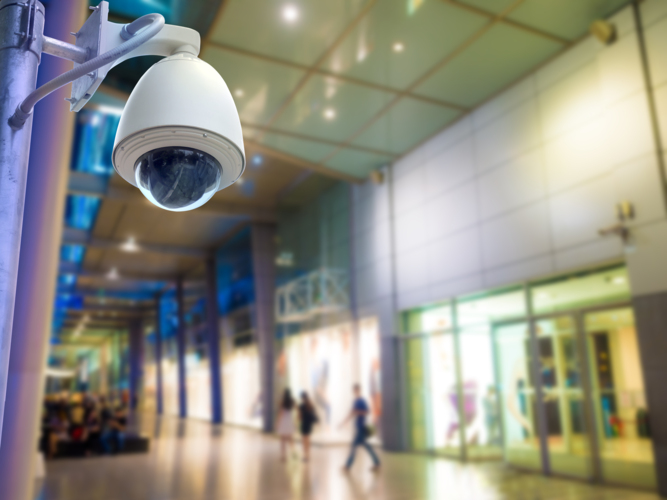Power over Ethernet (PoE) switches are a crucial component in modern network infrastructure, providing a streamlined solution for both data connectivity and power delivery to network devices. In this guide, we'll delve into what PoE switches are, how they work, their benefits, key features, applications, and why they are essential for efficient and scalable networks:
Understanding Power Over Ethernet (PoE) Switches:
Definition: power over ethernet switch are network switches that integrate PoE technology, enabling them to transmit both data and electrical power over Ethernet cables to connected devices.
How PoE Switches Work:
Power Delivery: PoE switches deliver power over the same Ethernet cables used for data transmission, eliminating the need for separate power cables.
Power Sourcing Equipment (PSE): PoE switches act as Power Sourcing Equipment, injecting power into Ethernet cables to supply power to connected Powered Devices (PDs) such as IP cameras, VoIP phones, wireless access points, and IoT devices.
Power Classification: PoE switches negotiate power needs with connected devices, ensuring they receive the appropriate amount of power based on their requirements.
Key Features of PoE Switches:
Seamless Integration: PoE switches seamlessly integrate power and data transmission, simplifying network installation and reducing cable clutter.
Cost Efficiency: By eliminating the need for separate power outlets and cables for each device, PoE switches lower installation and maintenance costs.
Flexibility and Scalability: PoE switches allow for easy deployment of new devices without the need for additional power sources, ideal for expanding networks.
Remote Power Management: Administrators can remotely monitor and control the power status of connected devices, enabling efficient troubleshooting and power cycling.
Safety Features: PoE switches incorporate safety measures such as overcurrent protection, short circuit protection, and under-voltage lockout to prevent damage to devices.
Compatibility: PoE switches support various PoE standards such as IEEE 802.3af, 802.3at (PoE+), and 802.3bt (PoE++), ensuring compatibility with a wide range of devices.
Benefits of PoE Switches:
Simplified Installation: PoE switches streamline network setup by eliminating the need for separate power outlets near devices.
Increased Reliability: With centralized power management, PoE switches reduce the risk of power failures and downtime.
Enhanced Flexibility: PoE switches enable flexible placement of devices without proximity to power sources, allowing for optimal device positioning.
Cost Savings: Reduced cabling requirements and lower installation costs contribute to overall cost savings for network deployments.
Scalability: PoE switches support the addition of new devices without the need for extensive rewiring, facilitating network expansion.
Green Technology: PoE switches promote energy efficiency by delivering power only when needed, reducing energy consumption and environmental impact.
Applications of PoE Switches:
IP Surveillance Cameras: PoE switches power and transmit data to security cameras, simplifying installation and reducing infrastructure costs.
VoIP Phones: PoE switches provide power and connectivity to VoIP phones, ensuring reliable communication without additional power adapters.
Wireless Access Points (WAPs): PoE switches power WAPs for wireless network connectivity, enabling flexible placement for optimal coverage.
IoT Devices: PoE switches support various IoT devices such as sensors, smart lighting, and access control systems, simplifying their deployment and management.
Digital Signage: PoE switches power and connect digital signage displays, making it easy to deploy dynamic advertising or informational displays.
Real-World Example: PoE in Office Environments
Scenario: An office building is upgrading its network infrastructure to support new IP phones and wireless access points.
Deployment: PoE switches are installed throughout the building, providing power and data connectivity to the new devices.
Result: Employees enjoy seamless connectivity with VoIP phones and reliable Wi-Fi access from any location, all powered by PoE switches.
Future Trends in PoE Switches:
Higher Power Capacity: PoE standards like IEEE 802.3bt (PoE++) will continue to evolve, delivering higher power levels to support power-hungry devices.
IoT Integration: PoE switches will play a key role in IoT deployments, powering and connecting a myriad of IoT sensors and devices.
Smart Building Applications: PoE switches will support smart building initiatives by powering and managing a wide range of connected devices for building automation.
Energy Efficiency: Continued focus on energy-efficient PoE standards and features will drive sustainability in network infrastructure.
Conclusion:
Power over Ethernet (PoE)
switches offer a versatile and efficient solution for integrating power and
data connectivity in modern networks. From simplifying installations and
reducing costs to enabling flexible and scalable network deployments, PoE
switches have become indispensable in various applications such as IP
surveillance, VoIP, wireless networking, and IoT. As the demand for connected
devices and smart technologies grows, PoE switches will continue to evolve,
providing a reliable and efficient power delivery solution for the networks of
today and tomorrow. By embracing PoE technology, organizations can build robust
and future-ready networks that meet the demands of an increasingly connected
world.
For more info. visit us:





Comments